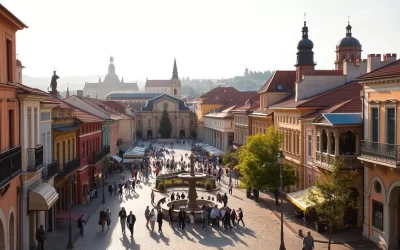Did you know that cash is still king in many parts of the world, including rural areas? While modern card technology is widely accepted in cities, having local currency on hand can make your journey much smoother. The official currency here is the Serbian dinar, and understanding how to manage it is key to avoiding unnecessary fees.
In major cities, you’ll find that credit and debit cards are accepted at hotels, restaurants, and shops. However, smaller vendors and rural areas often prefer cash. ATMs are widely available, but it’s wise to check for foreign transaction fees before making withdrawals.
Budgeting is simple here. For example, a meal at a local grill can cost as little as $3, while a fine dining experience might set you back $20. To save on exchange rates, consider using a travel money card that allows you to hold and spend in local currency without extra fees.
By planning ahead and understanding local payment methods, you can focus on enjoying your trip without worrying about money. Whether you’re exploring bustling cities or serene countryside, having the right travel money strategy ensures a hassle-free experience.
Introduction & Currency Basics in Serbia
Navigating a new country’s currency can be tricky, but it’s easier when you know the basics. The Serbian dinar is the official currency here, and it plays a central role in daily life. Introduced in the 19th century, it’s a symbol of national pride and economic stability.
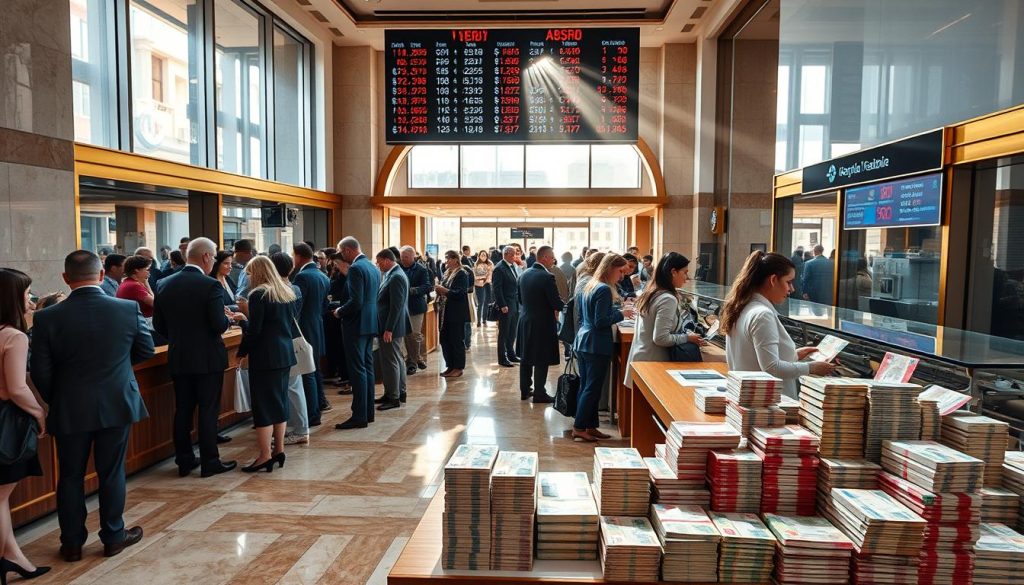
Understanding the Role of the Serbian Dinar
The dinar is more than just money; it’s a part of the country’s identity. You’ll see it used everywhere, from local markets to restaurants. Understanding its value helps you budget effectively and avoid overspending. For example, a cup of coffee might cost around 150 dinars, while a taxi ride could be 500 dinars.
When exchanging your USD to RSD, check the exchange rate to get the best deal. Many exchange offices in cities offer competitive rates, but fees can vary. ATMs are also widely available, but be aware of potential transaction fees from your bank.
Why Cash Still Rules
While cards are accepted in cities, cash is still king, especially in rural areas. Smaller vendors, local markets, and even some restaurants prefer cash payments. Carrying dinars ensures you’re prepared for any situation.
In cities, you’ll find plenty of ATMs and exchange offices. However, in rural regions, these services may be limited. Plan ahead and withdraw enough money before heading to smaller towns. This way, you won’t face any surprises.
“Having local currency on hand makes your trip smoother and more enjoyable.”
By understanding the role of the dinar and the importance of cash, you’ll navigate your journey with confidence. Whether you’re exploring bustling cities or quiet villages, being prepared ensures a hassle-free experience.
Serbia: Ultimate Travelers Guide to Currencies & Payments
Choosing the right payment method can make your travels smoother and more cost-effective. Whether you’re exploring bustling cities or quiet villages, having the right mix of cards ensures you’re prepared for any situation.
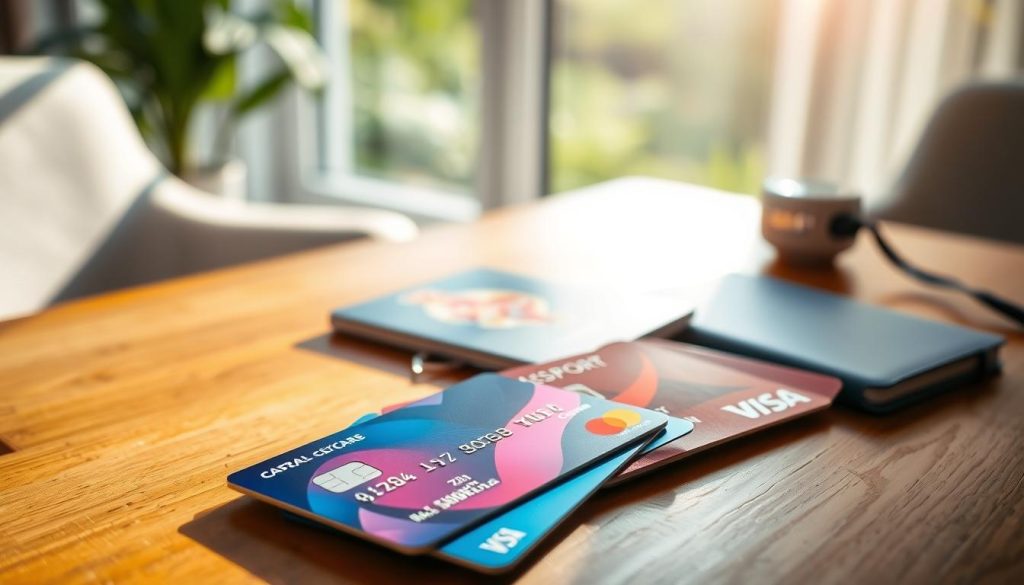
Credit Cards: Convenience and Rewards
Credit cards are widely accepted in major cities and offer benefits like travel rewards and purchase protection. Cards like the Capital One VentureOne Rewards waive foreign transaction fees, making them ideal for international trips. However, some cards may charge high interest rates or annual fees, so it’s important to read the fine print.
Debit Cards: Access to Cash
Debit cards are great for ATM withdrawals, allowing you to access local currency easily. They’re also useful for budgeting since you can only spend what’s in your account. Be mindful of potential transaction fees from your bank, especially for international withdrawals.
Prepaid Travel Cards: Flexibility and Security
Prepaid travel cards let you load multiple currencies, making them a flexible option. They’re secure since they’re not linked to your bank account, and many offer competitive exchange rates. However, some cards may have reload fees or inactivity charges, so choose one that fits your needs.
| Card Type | Benefits | Drawbacks |
|---|---|---|
| Credit Card | Travel rewards, purchase protection | High fees, interest rates |
| Debit Card | Access to cash, budgeting | Transaction fees |
| Prepaid Travel Card | Flexibility, security | Reload fees, inactivity charges |
Using a combination of these cards can offer flexibility and protection against unexpected expenses. For example, you might use a credit card for larger purchases and a debit card for ATM withdrawals. Prepaid cards are great for managing daily expenses without overspending.
When choosing a card, consider factors like exchange rates, fees, and security features. Look for options that offer low or no foreign transaction fees to maximize savings. By planning ahead, you can ensure a hassle-free and cost-effective trip.
Payment Methods in Serbia
Managing your money efficiently while traveling can save you time and stress. Whether you’re exploring bustling cities or quiet villages, having the right mix of payment options ensures you’re prepared for any situation. In Serbia, credit cards, debit cards, and travel cards each have their place, depending on where you are and what you’re doing.
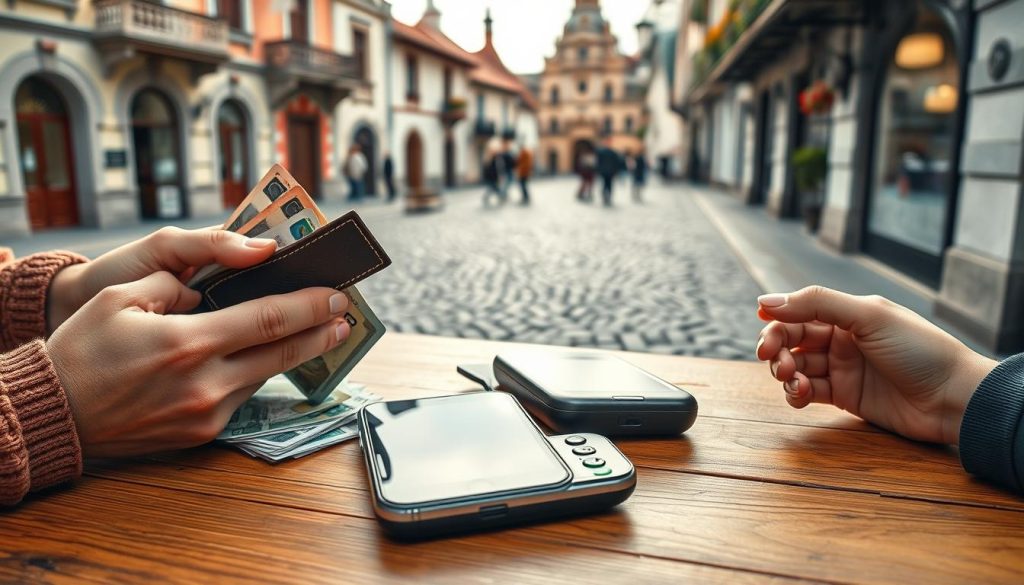
Using Credit Cards for Smooth Transactions
Credit cards are widely accepted in major cities, making them a convenient choice for hotels, restaurants, and shops. Many cards, like the Chase Sapphire Preferred, waive foreign transaction fees, saving you money on every purchase. They also offer perks like travel rewards and purchase protection, adding value to your trip.
However, some cards may have annual fees or high interest rates. Always check the fine print before using your card abroad. For larger purchases or dining out, a credit card is often the best option.
When to Rely on Debit or Travel Cards
In rural areas, cash is still king, and this is where debit or travel cards come in handy. Debit cards allow you to withdraw local currency from ATMs, ensuring you always have cash on hand. Travel cards, like the Wise Multi-Currency Card, let you hold and spend in dinars without extra fees, making them a flexible and secure option.
Debit cards are great for budgeting since you can only spend what’s in your account. Travel cards, on the other hand, offer better exchange rates and are not linked to your bank account, adding an extra layer of security.
| Card Type | Benefits | Drawbacks |
|---|---|---|
| Credit Card | Travel rewards, no foreign fees | Annual fees, high interest |
| Debit Card | Access to cash, budgeting | ATM withdrawal fees |
| Travel Card | Flexibility, security | Reload fees, inactivity charges |
By using a combination of these cards, you can enjoy the convenience of credit, the accessibility of debit, and the security of travel cards. For example, use a credit card for dining and hotels, a debit card for ATM withdrawals, and a travel card for daily expenses. This mix ensures you’re always prepared, no matter where your journey takes you.
Managing Money & ATMs in Serbia
Handling your finances while traveling can be straightforward with the right strategies. Whether you’re in a bustling city or a quiet village, knowing where to find ATMs and how to handle cash safely is essential. This guide will help you navigate the financial landscape with ease.
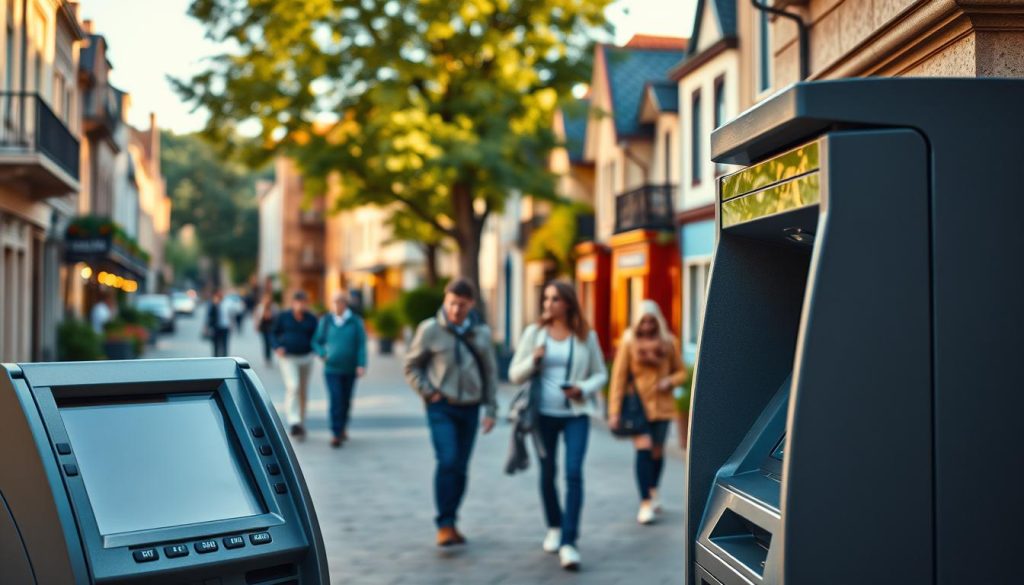
Locating ATMs in Major Cities & Rural Areas
In major cities like Belgrade and Novi Sad, ATMs are plentiful and easy to find. They’re often located in banks, shopping centers, and busy streets. These machines usually offer English language options, making transactions simple for travelers.
In rural areas, however, ATMs can be harder to locate. It’s a good idea to withdraw enough cash before heading to smaller towns. Some banks, like Banca Intesa and UniCredit Bank, have branches in rural areas, but their hours may be limited.
If you’re using a debit card or credit card, check for international fees. Some accounts, like Betterment Checking, reimburse these fees, saving you money on every withdrawal.
Safety Tips for Handling Cash
Carrying cash is convenient, but it’s important to stay safe. Avoid withdrawing large sums at once. Instead, take out smaller amounts as needed. This reduces the risk of theft.
Use ATMs in well-lit, populated areas. Machines inside banks or shopping centers are usually the safest. Always cover the keypad when entering your PIN to protect your account.
If you’re carrying cash, keep it in multiple places. For example, store some in your wallet and some in a secure bag. This way, you won’t lose everything if one spot is compromised.
| ATM Option | Benefits | Drawbacks |
|---|---|---|
| Bank ATMs | Secure, English language options | Limited hours in rural areas |
| Shopping Center ATMs | Convenient, well-monitored | May charge higher fees |
| Fee-Free ATMs | No transaction fees | Harder to find in rural areas |
By planning your cash withdrawals and using ATMs wisely, you can manage your money effectively. Whether you’re exploring cities or countryside, these tips ensure a smooth and secure experience.
Currency Exchange & Cost-Saving Tips
Getting the most out of your money while traveling starts with smart currency exchange strategies. Whether you’re converting USD to RSD or using a travel card, understanding the process can save you significant fees and maximize your budget.
Best Practices for Exchanging USD to RSD
When exchanging money, timing and location matter. Avoid converting your USD in the U.S., as rates are often unfavorable, and commissions can be high. Instead, wait until you arrive to use local exchange offices or banks, which typically offer better rates.
Here are some tips to ensure you get the best deal:
- Compare rates at multiple banks or exchange offices before committing.
- Use ATMs for withdrawals, but check for foreign transaction fees.
- Consider a travel money card to lock in favorable rates and minimize fees.
Avoiding High Commissions and Fees
Fees can quickly add up if you’re not careful. For example, credit cards may charge up to 3% for foreign transactions, and some ATMs have withdrawal fees. To avoid these pitfalls, look for cards with no foreign transaction fees or accounts that reimburse ATM charges.
Here’s how to save on fees:
- Use travel cards that offer competitive exchange rates and low fees.
- Withdraw larger amounts less frequently to minimize ATM fees.
- Always decline Dynamic Currency Conversion (DCC) at ATMs or point-of-sale terminals.
“Smart currency exchange can make your trip more affordable and stress-free.”
By following these strategies, you can stretch your travel money further and focus on enjoying your journey. Whether you’re exploring cities or countryside, being prepared ensures a smooth and cost-effective experience.
Budgeting for Your Serbian Adventure
Planning your budget for a trip doesn’t have to be stressful—it’s all about knowing what to expect. With a mix of cash and cards, you can manage your travel money efficiently and enjoy your journey without financial worries. Let’s break down the costs and strategies to make your adventure smooth and affordable.
Daily Spending: Meals, Transport, and Attractions
Daily expenses can vary depending on your preferences. For example, a meal at a local grill might cost around $3, while a three-course dinner at a mid-range restaurant could be $15. Public transport is affordable, with a monthly pass costing about $30. Attractions like museums or historical sites often have entry fees under $10.
Here’s a quick breakdown of daily costs:
- Meals: $5-$20 per day
- Transport: $1-$2 per ride or $30 for a monthly pass
- Attractions: $5-$15 per entry
Understanding Costs for Accommodation and Activities
Accommodation options range from budget-friendly hostels to mid-range hotels. A hostel bed might cost $10-$15 per night, while a hotel room in the city center could be $50-$100. For activities, guided tours or outdoor adventures like hiking are often free or low-cost.
Here are some examples:
- Hostels: $10-$15 per night
- Hotels: $50-$100 per night
- Activities: Free to $20 per person
Tips for Managing Your Travel Money Efficiently
To avoid overspending, track your expenses daily. Use a travel card for most transactions to lock in favorable exchange rates and minimize fees. Withdraw cash in larger amounts to reduce ATM withdrawal fees, but keep it secure.
“A little planning goes a long way in making your trip enjoyable and budget-friendly.”
Here are some additional tips:
- Use a mix of credit cards and cash to balance convenience and cost.
- Set a daily budget and stick to it.
- Always have cash on hand for smaller vendors or rural areas.
By following these strategies, you can make the most of your travel money and focus on creating unforgettable memories.
Conclusion
Understanding local payment methods can make your journey smoother and more enjoyable. The Serbian dinar is the primary currency, and having a mix of cash and cards ensures you’re prepared for any situation. In cities, credit cards are widely accepted, while rural areas often prefer cash.
To save on exchange rates, consider using a travel card that allows you to hold and spend in local currency without extra fees. Always check for transaction fees when using ATMs or making purchases abroad. Planning ahead and understanding your options can help you avoid unnecessary costs.
By managing your money wisely and staying informed, you can focus on enjoying your trip. Whether you’re exploring bustling cities or quiet villages, being prepared ensures a hassle-free experience. For more tips, review the sections above and feel free to reach out with any questions!
The above is subject to change.
Check back often to TRAVEL.COM for the latest travel tips and deals.
Here are some Tours & Sightseeing suggestions that might pique your interests!


